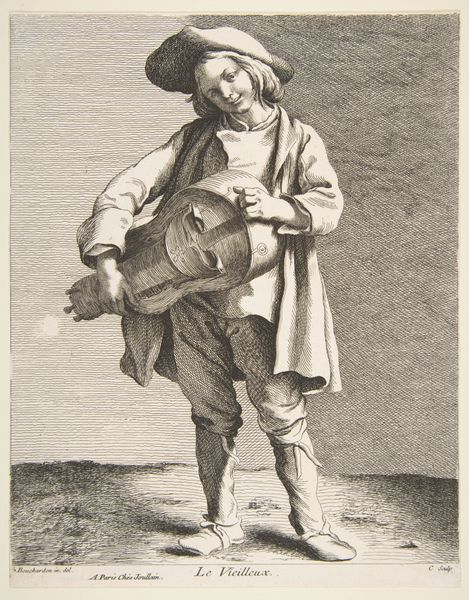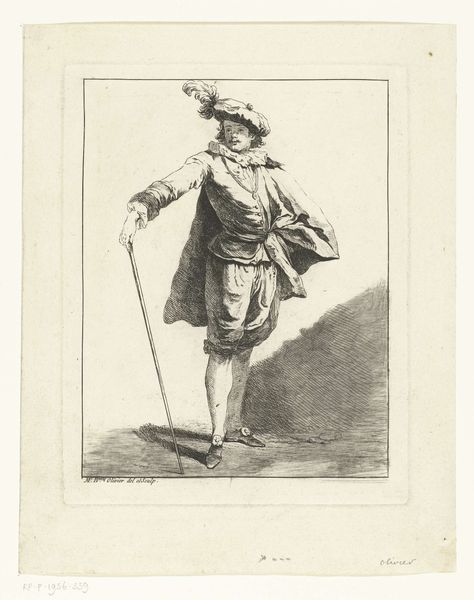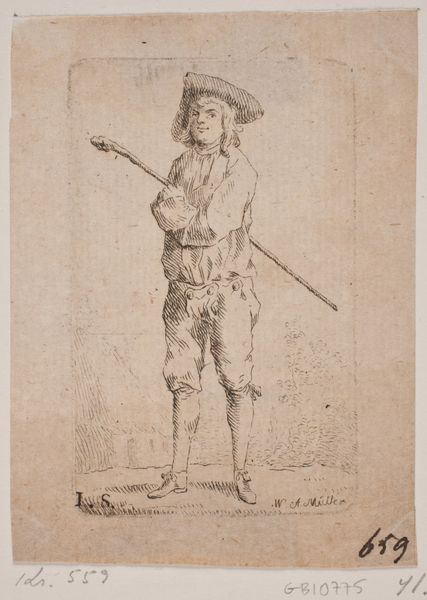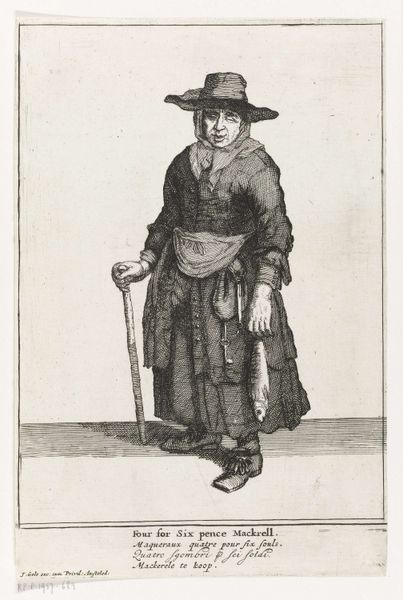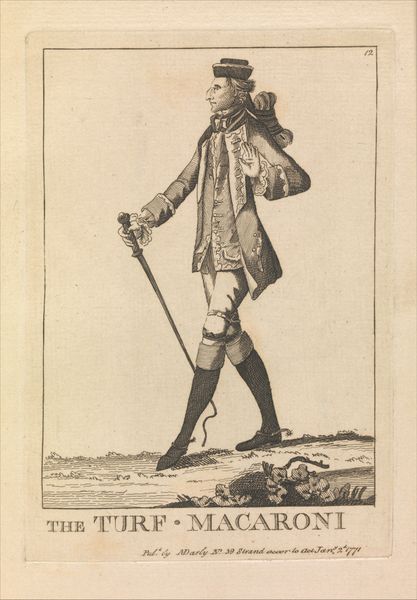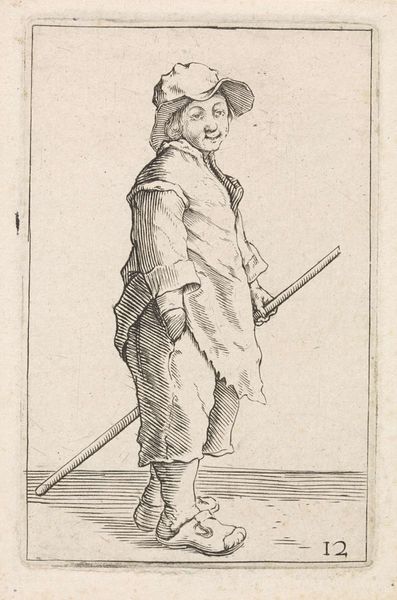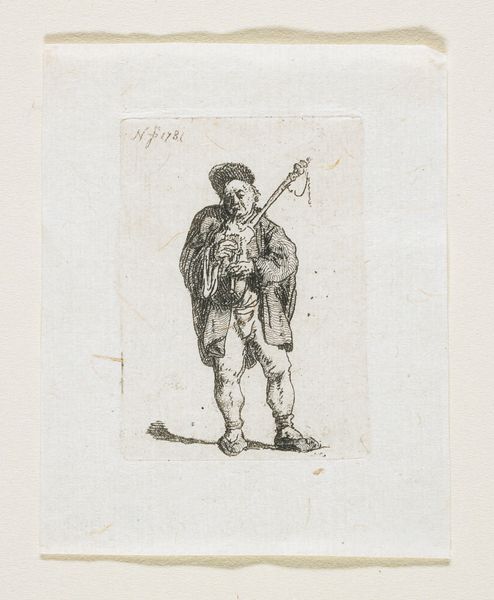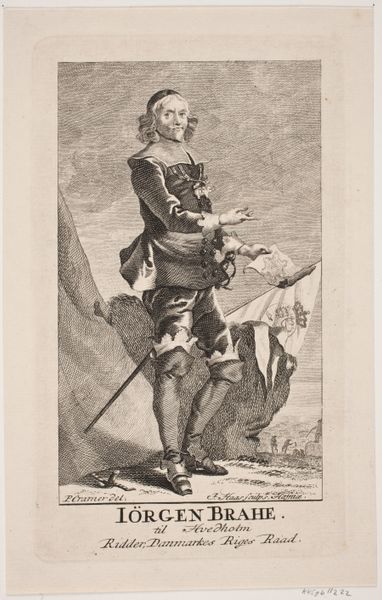
drawing, print, engraving
#
portrait
#
drawing
# print
#
portrait drawing
#
genre-painting
#
engraving
Dimensions: Sheet: 9 1/4 x 7 1/8 in. (23.5 x 18.1 cm) Image: 8 7/8 × 7 1/16 in. (22.6 × 18 cm)
Copyright: Public Domain
Editor: Here we have Anne Claude Philippe Caylus's "Laces Peddler," created around 1738. It's an engraving. There's a stark simplicity to it. I'm struck by how the artist used line to create depth and texture. What draws your eye in this piece? Curator: The strategic deployment of hatching to delineate form, juxtaposed against areas of relative emptiness, is most compelling. Note how the convergence of lines simulates shadow, lending three-dimensionality to the figure. What semiotic structures emerge from your interpretation of these forms? Editor: I suppose the hatching directs my attention towards the figure, separating him from the background. Also, the laces form almost abstract shapes. Do you think that has a specific significance? Curator: Indeed. Observe how the laces themselves function as both subject and structural element. The arrangement creates a subtle rhythm, balanced by the asymmetry of the figure's pose. What structural relationships do you discern between figure and ground? Editor: Well, the ground seems less defined, it doesn't grab your attention like the peddler himself. I also notice the inscription at the bottom; how does it impact the overall form? Curator: "Mes beaux Lacets" is incorporated visually. Typography, tone, line quality—these components interlock in the matrix. How would altering this inscription affect the compositional unity of the work? Editor: Interesting. I hadn't thought of it like that! I appreciate seeing how form dictates the content and even the context. Curator: And I value your questions and engagement with these abstract forms. Looking closely like this clarifies everything!
Comments
No comments
Be the first to comment and join the conversation on the ultimate creative platform.
